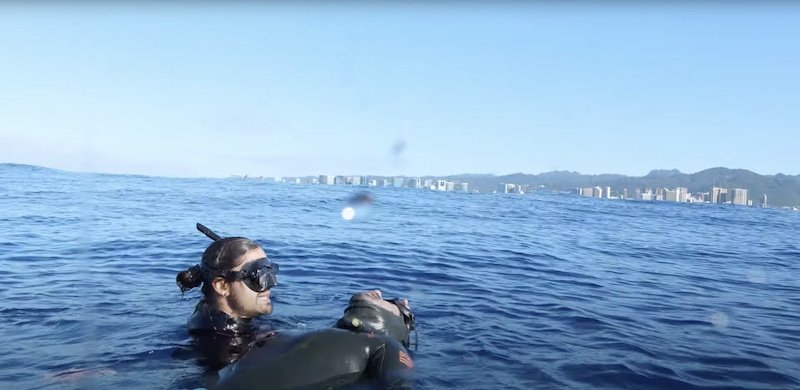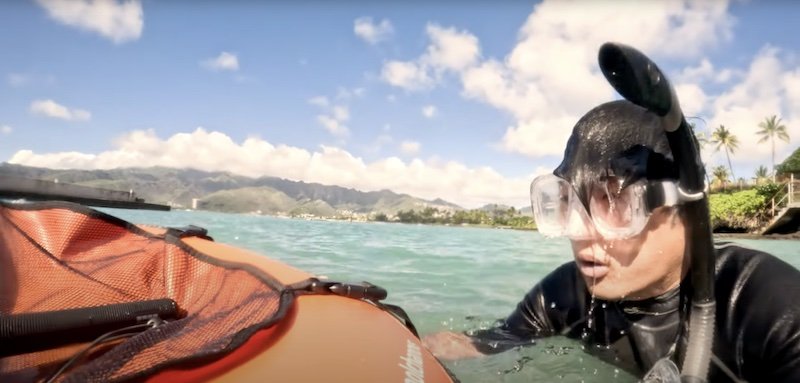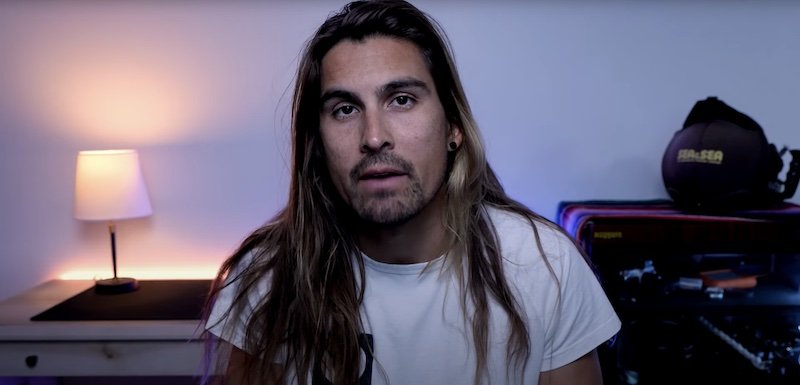
 Nick Pelios
Freediver, Creator
Nick Pelios
Freediver, Creator

 Nick Pelios
Freediver, Creator
Nick Pelios
Freediver, Creator
In a recent video, Alchemy partner Josh Munoz, a professional underwater photographer and freediving instructor, focused on shallow water blackouts: understanding their causes, how to respond if you encounter one, and strategies for prevention. He delved into the effects of diminished oxygen levels on the body, recognizing the warning signs preceding a blackout. This is Josh's take on blackouts.
Before delving into the onset of a blackout, it's essential to grasp the physiological processes that precede it. When we hold our breath, two primary changes occur in the body. Firstly, our oxygen levels decline, leading to what we term hypoxia. Secondly, our carbon dioxide (CO2) levels rise. When a diver surpasses their breath-holding limit, they may exhibit symptoms such as tunnel vision, a narrowing of focus akin to curtains drawing in, clouded consciousness, jittery movements, or unfocused eyes. Recognizing these indicators, it's imperative to promptly resume breathing.

Generally, most individuals can hold their breath for up to three minutes without surpassing their limits. Understanding these limits is crucial for safe diving practices, as explained in this video. Observing someone experiencing hypoxia, we might notice blue lips, unfocused eyes, and jittery movements. In the featured video, a diver holds their breath for an extended duration, evident in their jittery movements, unfocused eyes, and slightly discolored lips upon resurfacing. After breathing air, they swiftly regain full consciousness and exhibit improved motor skills—a positive indicator. However, their loss of motor control (LMC), characterized by involuntary contractions due to oxygen deprivation, signals a critical phase. While not all LMC episodes culminate in a blackout, timely access to air allows the body to recover. Failure to do so can escalate an LMC into a complete blackout.

Blackouts occur when oxygen levels in the body plummet to dangerously low levels, specifically when the partial pressure of oxygen drops below a critical threshold. When oxygen levels dip too low, the body enters a blackout state as a protective measure. Essentially, the brain induces a state of temporary unconsciousness to preserve vital organs. It's crucial to clarify that blackouts do not result in brain damage, especially when submerged underwater. The brain recognizes the underwater environment and initiates an automatic response known as a laryngospasm. This response involves the instant contraction of the vocal folds, expelling any remaining air while sealing the lips to prevent water from entering the lungs. This critical moment underscores the importance of a buddy system for swift rescue and ascent to the surface.

To assist the diver in a blackout situation, we aim to grasp them just under their arm, maintaining one hand on their chin and ensuring the mask remains on their face. With the other hand positioned at the back of their head, we begin to swim them upward. Upon reaching the surface, our priority is to keep their airways and chest above water, achieved effectively through a Dosey-doe maneuver. This leaves one hand free, which we utilize to remove any facial equipment, such as a mask or nose clip. Subsequently, we gently blow air along their face, just beneath their eyes, targeting the receptors that signal to the brain that it's no longer submerged. Throughout this process, we communicate with the diver using their name, guiding them to breathe. Reflecting on the video, I acknowledge a lapse in blowing on the diver's face promptly, potentially prolonging the time before their first significant breath after the blackout. My lack of proficiency at that moment could have contributed to the blackout lasting longer than necessary.

Experiencing a loss of motor control or a complete blackout should not be commonplace occurrences in freediving. These are potential consequences that may arise, but they are not inherent to the sport. When engaging in free diving, it's crucial to maintain a state of physical and mental relaxation, uphold proper form and technique, and employ correct breathing methods. Most importantly, we must always dive within our limits. This underscores the necessity of enrolling in a free diving class. I've dedicated an entire video to the invaluable lessons taught in such courses and why they are essential. Even mastering the role of a safety diver alone would render a free diving class successful. Until then, happy diving!